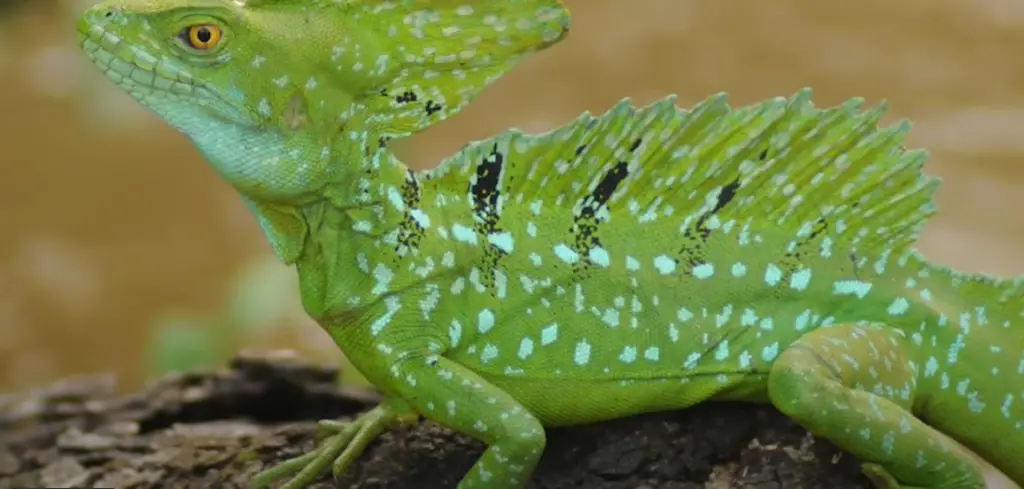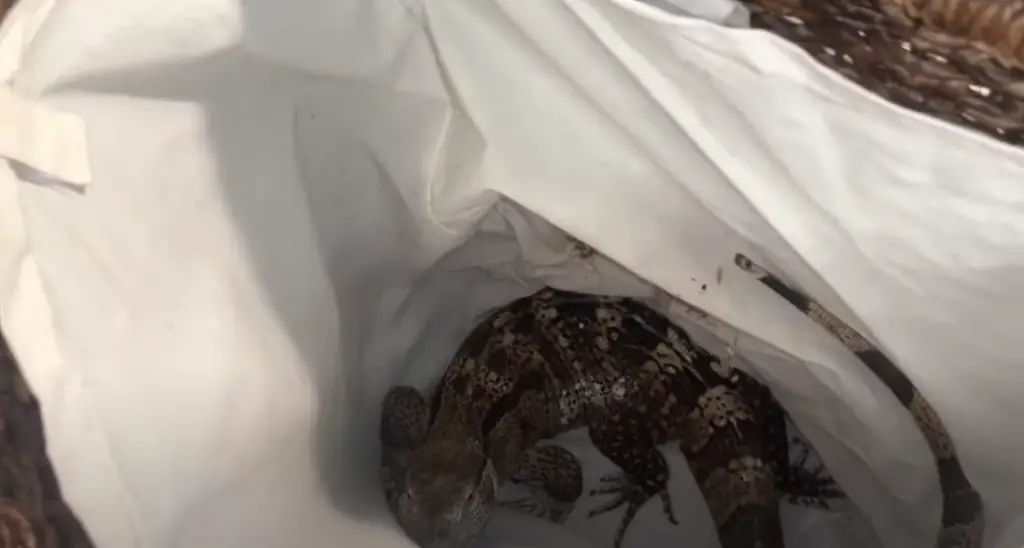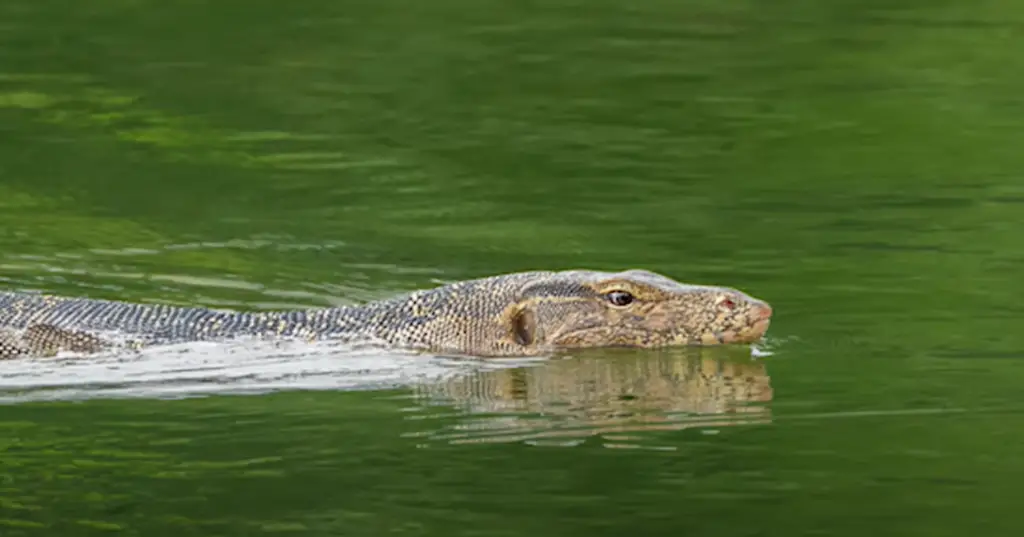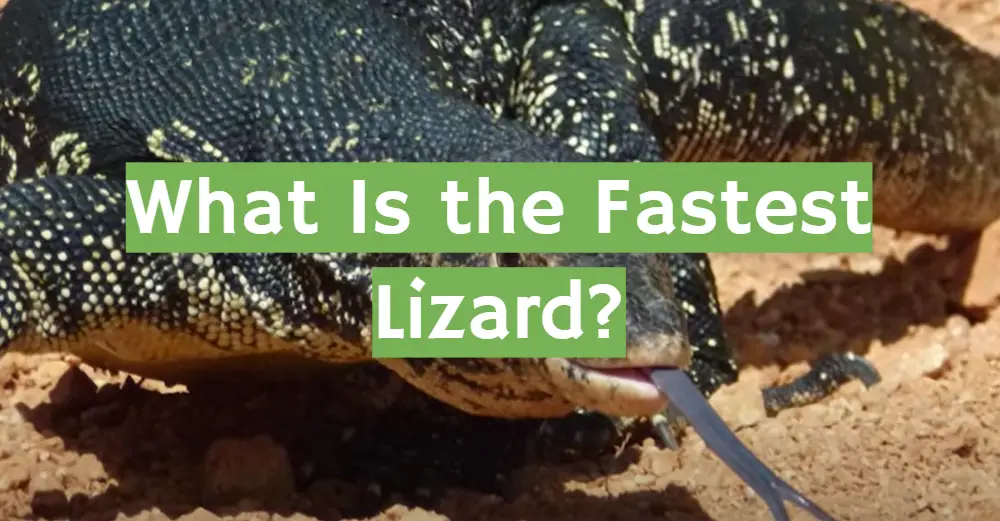Lizards have always been fascinating creatures to humans. They come in all shapes and sizes, and can be found in many different environments around the world. Some people may think that all lizards are created equal, but this is not the case.
There are actually quite a few different types of lizards, each with their own unique set of characteristics. In this guide, we will take a look at some of the fastest lizards in the world and learn more about them.
What Is the Fastest Lizard?
The fastest lizard is the spiny-tailed iguana, which can run up to 20 miles per hour. The next fastest lizard is the monitor lizard, followed by the gecko.
Iguanas are a type of lizard that is native to Mexico and Central America. They can grow up to six feet long and weigh up to 20 pounds. Iguanas are popular pets because they are relatively low maintenance and can live up to 20 years in captivity.
Monitor lizards are a type of lizard that is native to Africa, Asia, and Australia. They can grow up to ten feet long and weigh up to 150 pounds. Monitor lizards are not recommended as pets because they require a lot of space and can be aggressive.
If you are looking for a pet lizard, be sure to do your research to find the right one for you. Iguanas, monitor lizards, and geckos all make great pets if you can provide them with the proper care.
Basilisks
Basilisks are a type of lizard that has six different species. The biggest and most well-known one is the common basilisk or plumed basilisk. It can grow up to 3 feet long, including the tail.

The common basilisk is found from Mexico to Brazil and on the Caribbean islands of Trinidad and Tobago, Martinique, Hispaniola, Jamaica, Puerto Rico, and the Lesser Antilles. It is also known as theJesus Christ lizard or Jesus lizard for its ability to run across water for short distances.
The common basilisk is a forest floor dweller that is often seen sunning itself on rocks or logs near streams. It is an excellent swimmer and climber. It holds its long tail vertically for balance. If it is cornered, it will usually try to escape by running up a tree or diving into the water. If escape is not possible, it will try to intimidate its attacker by erecting its crest and expanding its dewlap.
Basilisks are usually shy and will run away if they have the chance. But if they can’t escape, they might try to scare their attacker by standing up tall and making a loud noise. When they’re scared, basilisks can also walk on water with their long tail held straight up for balance.
Basilisks are a genus of lizards that includes six species. The largest and most well-known basilisk is the common basilisk or plumed basilisk. It can grow up to 0.80 m (31 in) long, including the tail.
This basilisk is found from Mexico to Brazil and on the Caribbean islands of Trinidad and Tobago, Martinique, Hispaniola, Jamaica, Puerto Rico, and the Lesser Antilles. It is also known as the Jesus Christ lizard or Jesus lizard for its ability to run across water for short distances. [1]
Racerunners
They are the fastest moving lizards on Earth. They can hit speeds of up to 20 miles per hour in short bursts, and they are quite agile.
There are several things to consider before purchasing a racerunner.
- You’ll need to make sure that you have a large enough enclosure for your new pet.
- Racerunners are very active, and they need plenty of space to run around. You’ll also want to consider the climate in which you live.
- Racerunners come from warm, arid environments, so you’ll need to provide your pet with a basking spot that stays around 80 degrees Fahrenheit.
If you think a racerunner is the right pet for you, be sure to do your research and purchase your lizard from a reputable breeder. With proper care, your new pet will bring you years of enjoyment.
Large Monitor Lizards
The largest monitor lizard is the komodo dragon, which can grow to be up to ten feet long and weigh over two hundred pounds. Komodo dragons are a type of lizard that can be found on the Indonesian island of Komodo and several other nearby islands.
Another large monitor lizard is the African rock python, which can grow to be over twenty feet long and weigh over two hundred pounds. These large snakes live throughout Africa. They kill prey with their powerful squeezes. They’re not very fast, but they are good swimmers and can move quickly when they need to. [1]

Spiny-Tailed Iguana
The Spiny-tailed iguana (Ctenosaura similis) is a species of lizard in the family Iguanidae. It is one of the largest members of the lizard family. These lizards can grow up to be 160 cm (63 in) long. They are relatively long-lived, with some living for more than 20 years in captivity.
The spiny-tailed iguana is a herbivorous species, feeding primarily on leaves, flowers, and fruits. It can be found in many different habitats, including rainforests, dry forests, and savannahs. This species is mostly active during the day, and it spends a lot of time in trees.
The lizard is native to Mexico and Central America. It is found in Belize, Costa Rica, El Salvador, Guatemala, Honduras, Mexico, and Nicaragua. The spiny-tailed iguana has been introduced to a number of islands in the Caribbean, including Cuba, Jamaica, and Puerto Rico.
It is listed as Least Concern on the IUCN Red List. However, it is considered to be threatened in some parts of its range due to habitat loss and degradation. The spiny-tailed iguana is also hunted for food in some areas. [3]
Perentie
The Perentie is the largest monitor lizard in Australia and can grow up to lengths of over two meters! They are incredibly fast runners and have been known to reach speeds of over 40 kilometers per hour. If you’re looking for a big, fast lizard then the Perentie is definitely the one for you!
The Perentie is a carnivore and its diet consists mostly of small mammals and reptiles. They are also known to eat the occasional bird or two. Due to their large size, they are not afraid of taking on larger prey items such as kangaroos.

Bearded Dragon
The Bearded Dragon is a type of lizard that lives in Australia. Mountain lions can grow up to two feet long. They have a head that looks triangular and impressive. They also have fur on their chin and throat area for warmth.
The name “Beardie” comes from the fact that this animal has a beard-like growth pattern near its mouth. This makes it look different from other similar animals that were discovered by naturalists centuries ago.
The bearded dragon is a fascinating lizard that can be found in the desert and arid areas of Australia. These animals prefer to live on islands with rocks or bushes, which means they are mostly active during the daytime when it is hot outside.
Bearded dragons make great pets because they have an interesting personality and enjoy being handled. If you’re thinking about getting a bearded dragon, do your research so that it’s easier on both of you.
Green Iguana
The green iguana (Iguana iguana) is a large, arboreal, mostly herbivorous species of lizard native to Central and South America.
A popular pet due to their docile nature and bright colors, these lizards can grow up to six feet in length.
Green iguanas are one of the fastest moving lizards, and have been known to reach speeds of up to 20 miles per hour in short bursts. [3]
Black Mamba
The Black Mamba is one of the most feared snakes in Africa. But what many people don’t know is that the lizard is also one of the fastest lizards in the world.
With speeds of up to 20 miles per hour, the Black Mamba can easily outrun most predators. And if that wasn’t enough, it is also one of the most venomous snakes in the world.
So, if you’re looking for a fast lizard that can also pack a serious punch, then the Black Mamba is definitely the lizard for you.

Komodo Dragon
The Komodo dragon is a 25-foot long lizard that can weigh up to 200 pounds. Theylive on the Indonesian island of Komodo and on nearby islands. They are excellent swimmers, but they usually sleep in trees or by water sources so they can watch for food.
Komodo dragons are one of the world’s most dangerous predators. They have an incredible ability to spot their prey, and once they have it in their sights, they will mercilessly tear it apart and eat it until there is nothing left but bones.
One report says that one Komodofasty killed its own rider before taking off with his captured animal into the woods where both were never seen again. [3]
Importance Of Speed
Lizards are some of the fastest creatures on Earth. They use their speed to escape predators, hunt prey, and even outrun other lizards in races.
The speed of a lizard is important for many reasons.
- For one, it allows them to escape from predators. If a lizard is being chased by a predator, the faster it can run, the more likely it is to escape.
- Lizards also use their speed to hunt prey. When a lizard is hunting, it needs to be able to catch its prey before it can eat it. The faster the lizard, the more likely it is to catch its prey.
- Finally, lizards use their speed to outrun other lizards in races. In some parts of the world, lizards race each other for fun. The faster lizard usually wins the race.
There are many different types of lizards, and each type has a different top speed. Some of the fastest lizards can reach speeds of up to 30 miles per hour. That’s about as fast as a car on the highway.
FAQ
What’s the Fastest Reptile?
- The fastest reptile is the cheetah, which can run up to 75 mph.
- The second-fastest reptile is the spiny-tailed iguana, which can reach speeds of 35 mph.
- The third-fastest reptile is the eastern glass lizard, which can reach speeds of 30 mph.
What is the Fastest Lizard in Water?
The fastest lizard in water is the sailfin dragon. It can swim at speeds of up to eight kilometers per hour.
This speedy reptile is a good choice for beginner swimmers because it is relatively docile and does not grow too large. Sailfin dragons are native to Southeast Asia and can be found in countries like Malaysia, Indonesia, and the Philippines.
If you are looking for a pet lizard that is fast in water, the sailfin dragon is a good option. Just be sure to provide it with a large tank or enclosure so it can swim around and stay active.

What is the Strongest Lizard on Earth?
The answer is – the Komodo dragon! These massive lizards can weigh up to 200 pounds and grow to be over ten feet long. Their powerful tails can deliver a blow that can crush bone, and their razor-sharp teeth can tear flesh. In fact, they are so dangerous that they have been known to kill humans.
But the Komodo dragon is not the only lizard that can be a force to be reckoned with. Some other lizards that are known for their strength include the Gila monster, the crocodile monitor, and the black-throated monitor.
What Lizard Can Run on Water?
The Jesus Christ Lizard, also known as the Common Basilisk, is a lizard that can run on water. It’s named after the Biblical figure because it can seemingly walk on water. The lizard has long toes that help it to distribute its weight and run on the surface of ponds and streams.
The Jesus Christ Lizard is found in Central and South America, and can grow up to two feet long. It’s a carnivore that preys on insects, small mammals, and other lizards. If you ever see an amazing creature running on water, don’t worry! They’re just trying to get away from predators or find a mate.
Who is Faster, a Snake or a Lizard?
This is a question that has puzzled many people for centuries. In general, snakes are faster than lizards. However, there are some exceptions to this rule. Some lizards, such as the whiptail lizard, can run very fast.
There are several reasons why snakes are generally faster than lizards. One reason is that snakes have long, muscular bodies that they can use to propel themselves forward quickly. Lizards, on the other hand, have shorter bodies and legs. This makes them slower than snakes.
Another reason why snakes are faster than lizards is that they have fewer bones in their bodies. Snakes have around 200 bones, while lizards have around 400 bones. This makes snakes much more flexible than lizards, and they can use this flexibility to their advantage when moving quickly.
What is the Scariest Lizard?
The scariest lizard is definitely the Komodo dragon! These massive lizards can grow up to ten feet long and weigh over 150 pounds.
They’re also known to be extremely aggressive, with a bite that can deliver a fatal dose of poison. If you’re looking for a pet lizard, the Komodo dragon is definitely not the one for you.
Useful Video: FASTEST LIZARD is Quick to BITE!
Conclusion
So, what is the fastest lizard? The answer may surprise you! The fastest lizard is the spiny-tailed iguana. They can run really fast depending on the environment and what they need to do. This lizard can reach speeds of up to 23 miles per hour!
That’s pretty fast for a creature that typically weighs less than two pounds. If you ever get a chance to see one in person, be sure to take note of its speed – it’s truly amazing!
Do you have a favorite lizard? Share your thoughts in the comments below! And, if you’re looking for more information on these amazing creatures, be sure to check out our other guides. We cover everything from the best lizard food to how to care for your new pet. Thanks for reading and we hope this guide was helpful!
References:
- https://animals.mom.com/fastest-lizard-4675.html
- https://dinoanimals.com/animals/the-fastest-reptiles-top-10/
- https://petosia.com/9-fastest-reptile-in-the-world/






Leave a Review